Illustrated Review: Why Patrick Maroon is such a good fit for Connor McDavid

The Edmonton Oilers look poised to reach the Stanley Cup Playoffs for the first time since 2006, and 20-year-old wunderkind Connor McDavid, in this his sophomore season, is in the thick of the scoring race.
These are facts that bring much delight to those concerned with hockey's health in Alberta, but are not facts that are mutually exclusive. Much of the Oilers success is informed by McDavid, who, at a very young age, appears to be all he was cracked up to be.
But what the Oilers did this offseason to put McDavid in positions to succeed has not been the road traveled for its captain, at least not lately, at least not when he's been at his most effective.
Oilers general manager Peter Chiarelli opened the checkbook to sign winger Milan Lucic over the off-season. Lucic is a player whom Chiarelli has seen be the driving force of offense firsthand during both executive and player's days with the Boston Bruins. To the tune of seven years, $42 million, Lucic put pen to paper to be a Swiss Army knife of sorts for McDavid: creating more room for him on the ice, becoming the benefactor of one the league's best assist-men, and making sure other bigger, nastier players didn't skate physically out of line.
Yet with the NHL schedule roaring into the stretch run, it has been Patrick Maroon, not Lucic, who has been on McDavid's left for the majority of his offensive success.
It's a strange situation considering how similar Maroon and Lucic are. The two players appear side-by-side on the Oilers roster page, and are the exact same height, with Lucic (233) three pounds heavier than Maroon.
Connor McDavid’s full-speed approach keying sophomore success with Oilers
But McDavid's numbers are appreciable better in his even-strength minutes with Maroon versus Lucic, a topic that's been written about at length.
And it's not totally a Maroon vs. Lucic conversation; McDavid's numbers with Maroon are staggeringly good compared to just about anything in the NHL: a Corsi for percentage close to 55, with a goals-for percentage north of 67, according to Stats.HockeyAnalysis.com. McDavid with Maroon and Leon Draisatl, as a unit, are the ninth-best possession line in the NHL for trios that have played at least 190 minutes together, according to Corsica.Hockey.
That same line, under the same minutes threshold, is third in scoring chances for percentage, and seventh in scoring chances for per 60.
McDavid is obviously trending up and is going to continue to do so, and that his underlying numbers paint the same picture was expected. But how successful he's been with Maroon paralleled to his inability to find close to the success with Lucic, is worth exploring.
What Went Wrong
Riding shotgun with McDavid means being able to keep up. As a center, McDavid plays lower in his defensive zone, and, when the Oilers break the puck out, McDavid often circles back to give defensemen a target and facilitate carries up ice.
In the case of a Lucic or a Maroon, playing on the wing doesn't mean staying on the outside. To complement McDavid, it means getting into the middle of the ice in the offensive zone to afford McDavid more space to operate, or to become a target.
On this sequence, Lucic has a chance to get to the front of the net with McDavid in control of the puck.
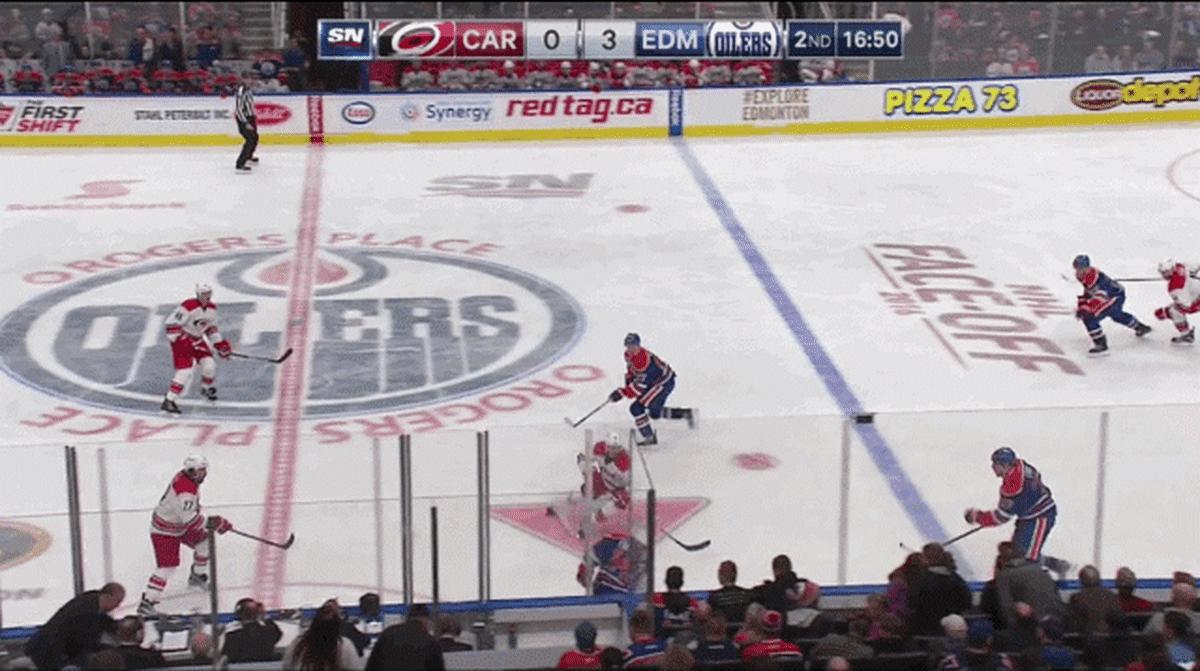
The Oilers hit the blue line three-on-three. Lucic, on the bottom of the screen, has an opportunity to drive the center lane and attack the crease to, at the very least, create a pocket of space below him with McDavid at the top of the frame.
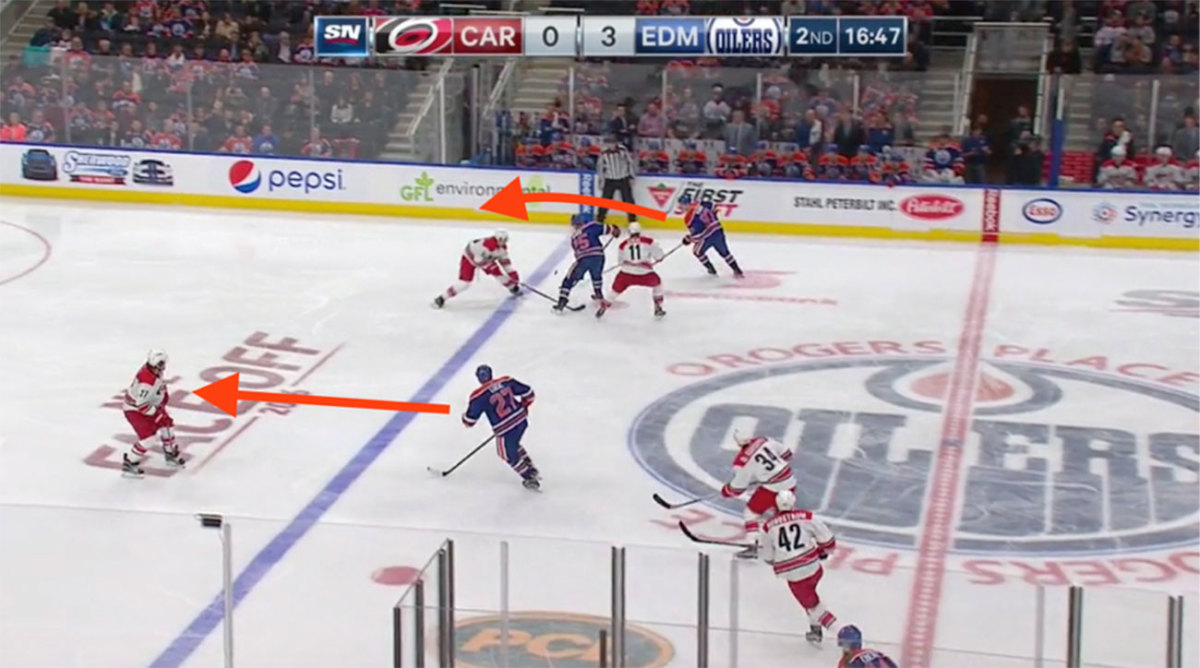
After Darnell Nurse drops the puck off for McDavid, the Oilers captain has a clear lane to the front. Lucic, who has a much smaller gap on Hurricanes defenseman Justin Faulk, has two routes: He can swim inside of Faulk, creating a clear target for McDavid, or try to slip behind him.
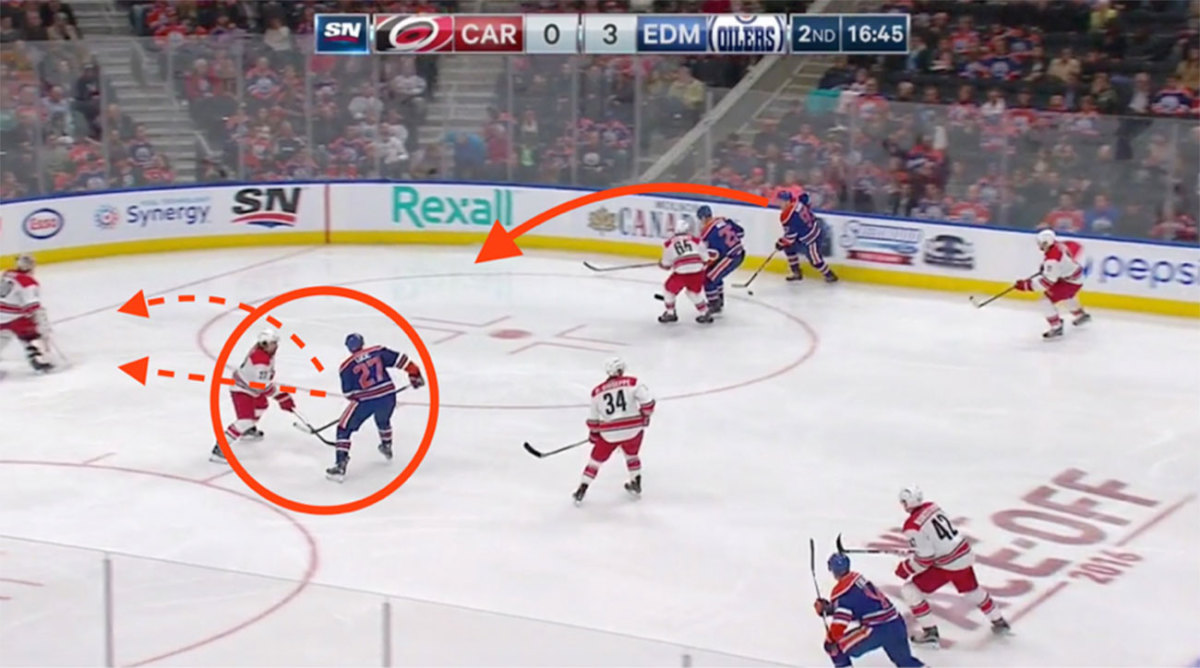
Though McDavid is unable to carry the puck into the middle, he does have a clear passing lane and sends the puck through the crease. But Lucic, who doesn't make a decisive move to the front, has his stick tied up by Faulk. He doesn't have body position on the Hurricanes defenseman, and their shoulders are virtually level. Without getting lower than Faulk, even Lucic, who has about 20 pounds on the defenseman, will have trouble making a play on this kind of pass.
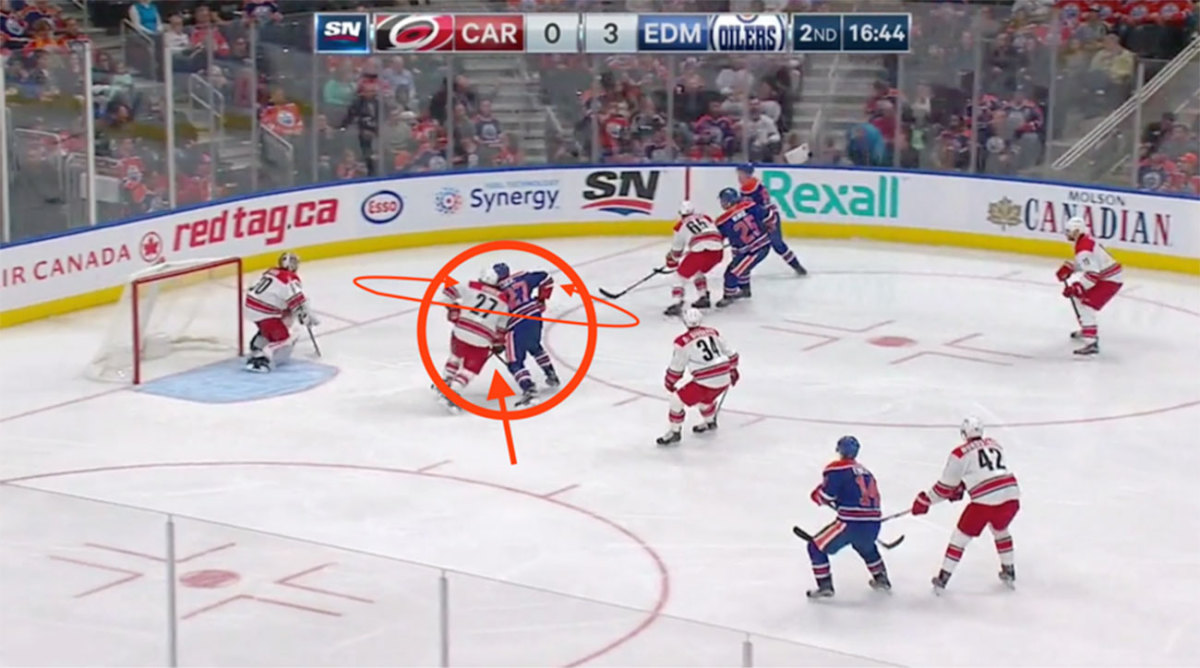
Here's another shift from the same game, from the same period. It begins with a Lucic turnover in his defensive zone, and ends with an ineffective wrist shot from the outside.

First, the turnover. Lucic is going to win a footrace to a loose puck along the boards. He has puck support down low from defenseman Oscar Klefbom. With the entire play in front of him, he can see Carolina defenseman Brett Pesce is up the boards. What he can't definitively see is the center of the ice, where he throws a blind, backhand pass that leads to a turnover.
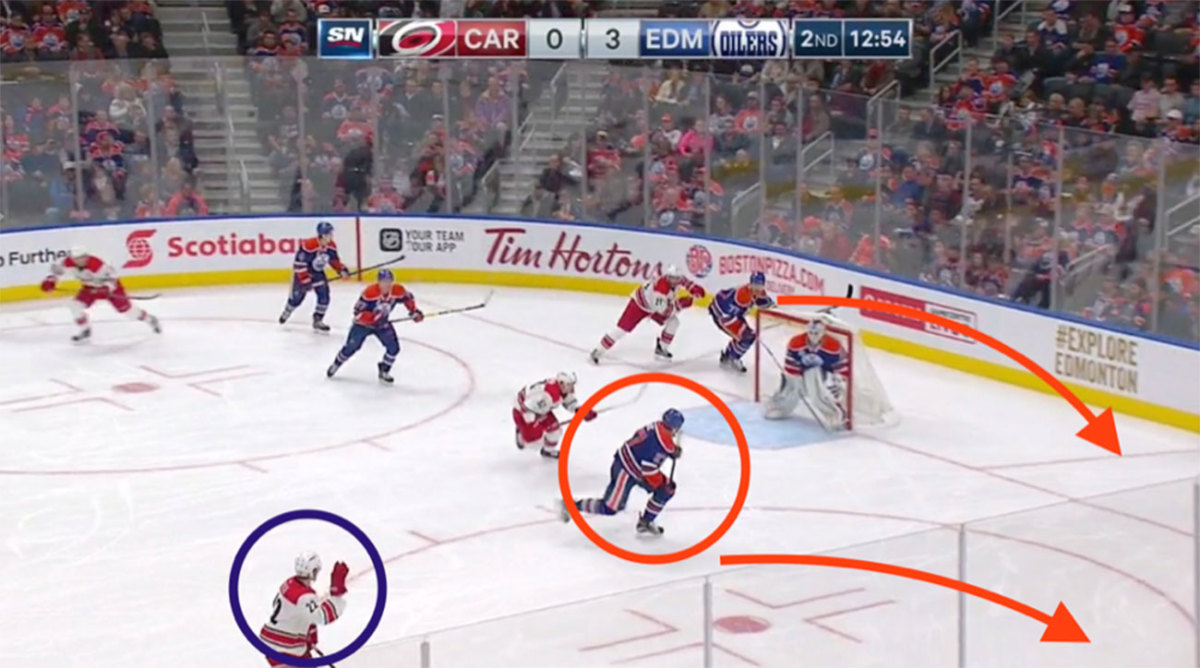
Now, the wrist shot. Again, Lucic has his head up and can clearly survey his options. McDavid is driving to the front, and is taking Faulk with him. Jordan Eberle, out of the frame, is the trailer, and is in position for a cross-ice pass, with McDavid creating a passing lane by driving the net.
Instead, Lucic takes a wrist shot to the short side. This is a low percentage shot that will usually end up either blocked, saved with no rebound, or saved with the rebound pushed into the corner.
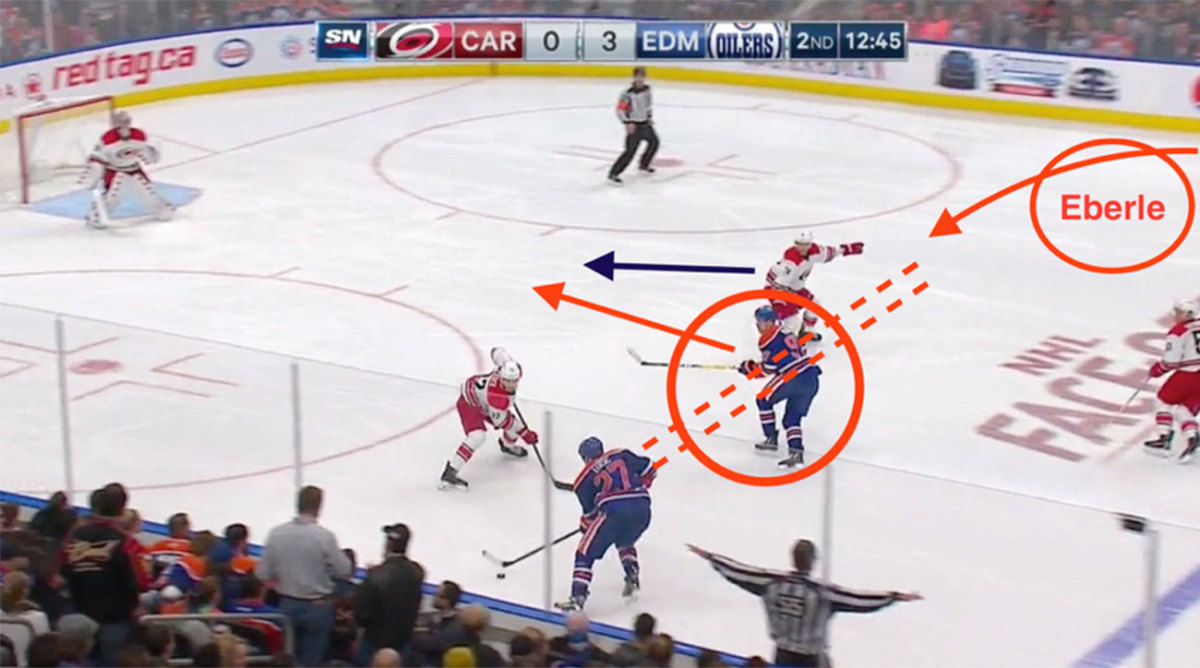
Their very next shift at even-strength, a combination of the first two issues leads to an ineffective rush. The Oilers hit the offensive blue line three-on-three, but Lucic opens up for a cross-ice pass that never gets there.

Lucic deserves some credit for how this play develops. He makes a good play to come back in his defensive zone, get his stick in the passing lane, and create a turnover. On a team that feasts on transition chances, creating turnovers, especially off the opposing team's rush, is a very good skill.
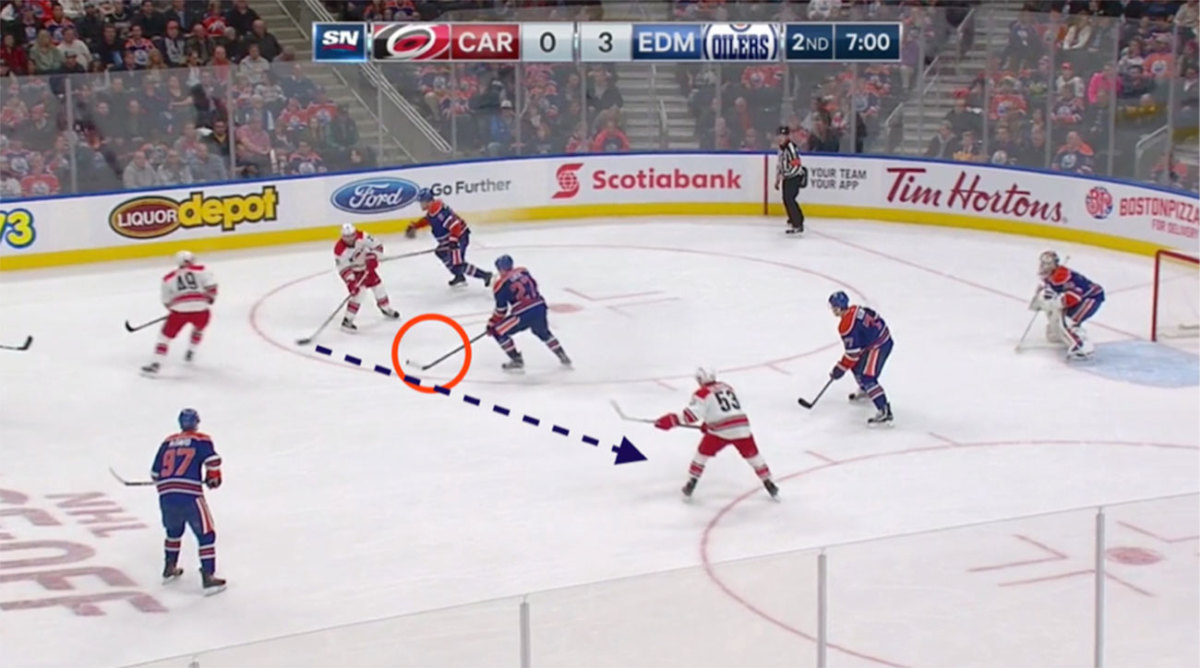
Now on the other end, McDavid has the puck along the boards. Lucic, at the top of the frame, is setting up to receive a pass. He opens up his hips, and has his stick on the ice in a shooting position.
But that's a difficult pass for anyone — even alone McDavid — to make. With Eberle driving to the front of the net, there's space for Lucic to help McDavid by coming across the zone. If not, Lucic can continue up the wall and give McDavid a target to rim the puck around. Instead, Lucic is on the periphery, not providing any kind of puck support.
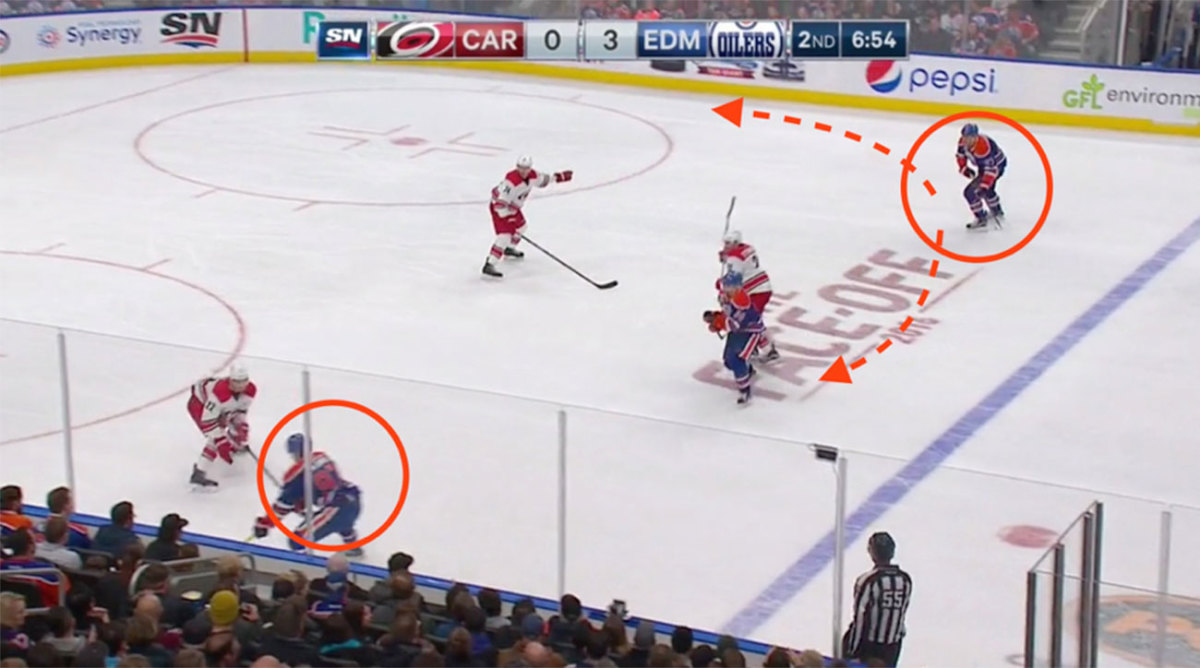
Maroon's Effectiveness
There are a bunch of highlight reel McDavid assists that feature Maroon on the doorstep tapping home a perfect pass. While this reflects a lot about the former's ability as a playmaker, the latter still had to be in the right position to capitalize on said ability.
What catalyzes this play is good awareness by Maroon. Patrick Hornqvist, off the rush, shoots wide to the far side. This missed shot by itself is enough to give a fast team an opportunity to counter. Maroon recognizes the puck will go up the far-side wall, and changes his path to meet it.
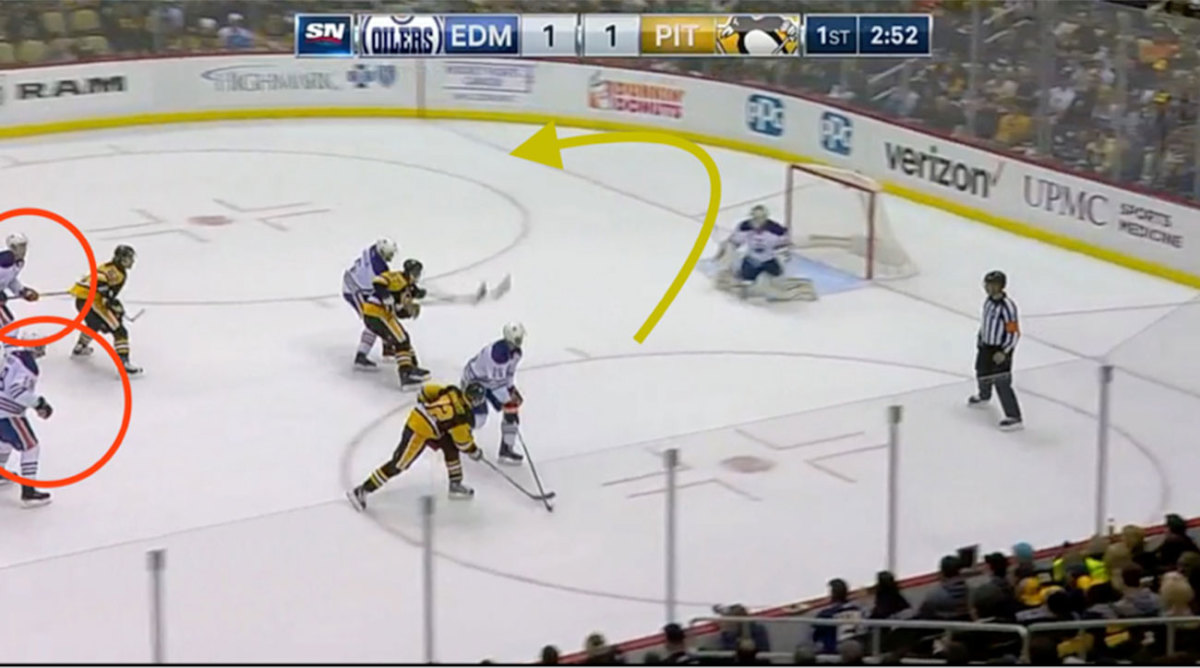
Once Maroon gets the puck, there's a sizeable gap between Penguins defensemen Trevor Daley, Kris Letang, and the Oiler's trio. Opposing teams have to respect McDavid's speed, and this defensive posture is common.
Maroon though does what any linemate of McDavid's should do with a chance to transition: He leaves the puck for his center. After that, he motors straight ahead, right toward the goal.
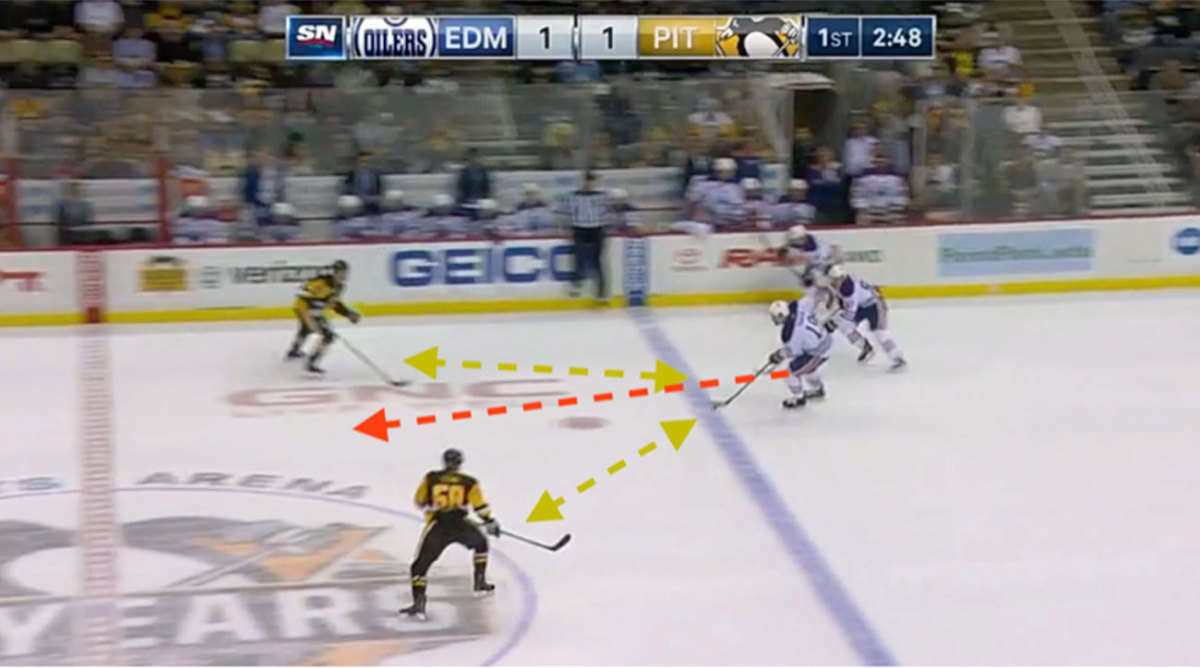
From the reverse angle, you can see that both McDavid and Maroon are in front of the Penguins defensemen at center ice. McDavid (left) carries the puck out wide on Daley, while Maroon (right) matches him stride for stride, while also continuing his path toward the goal.
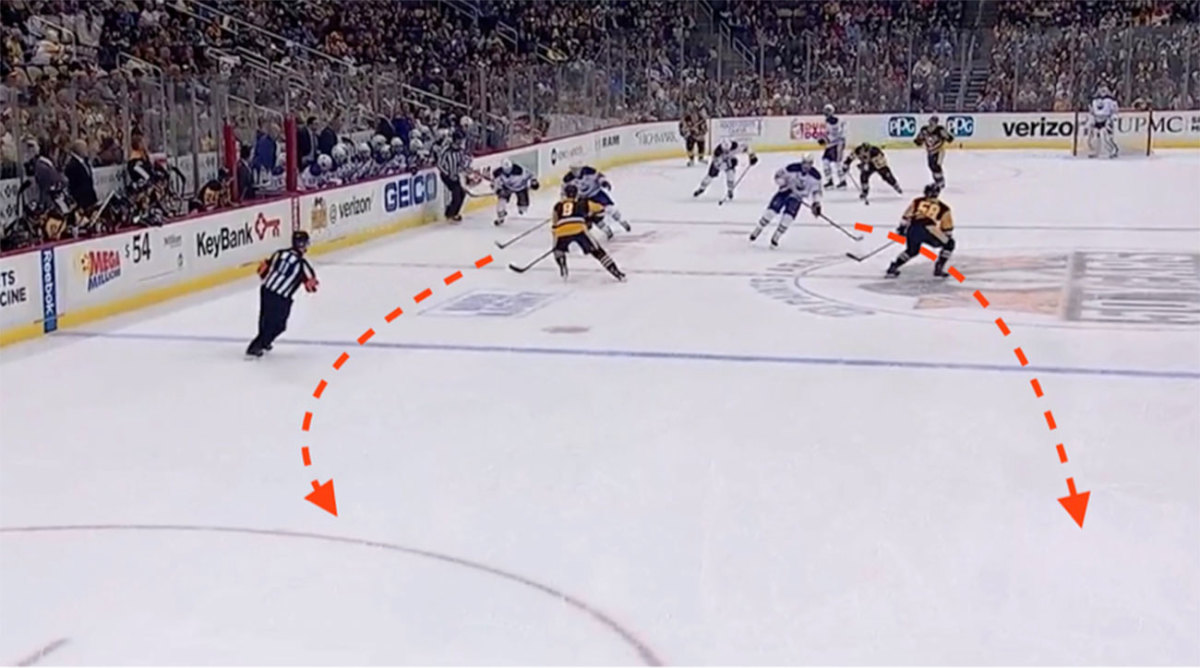
From the faceoff dot down, Maroon's focus is completely on McDavid, with his stick on the ice in a position for McDavid to find it. This is also part of McDavid's brilliance: His focus is completely on goaltender Matt Murray, and he draws the attention of the three closest Penguins. Though Letang lets Maroon slip by, a lot had to happen, and Maroon had to keep up for nearly 170 feet to be in that position.
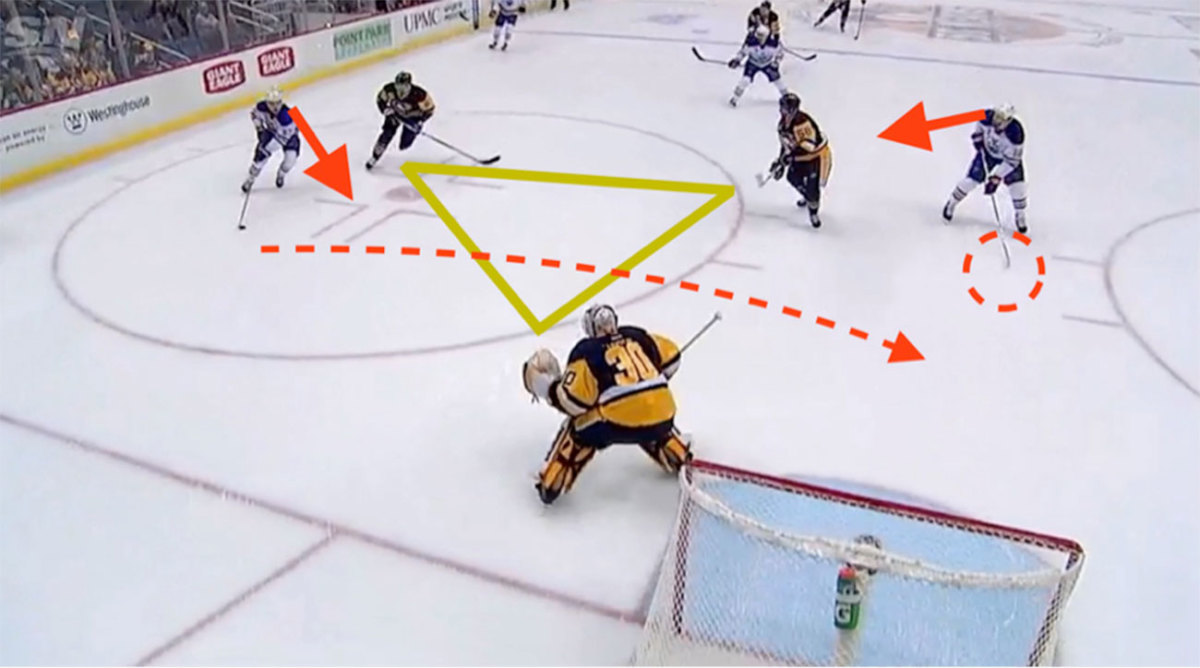
McDavid is at his most effective when his foot is completely on the throttle. To be an effective linemate, it means mitigating the amount of time spent as a speed bump or traffic cone. What Maroon does effectively with McDavid is anticipate the center's actions, and, for a bigger forward, keep up with whatever McDavid is doing.
